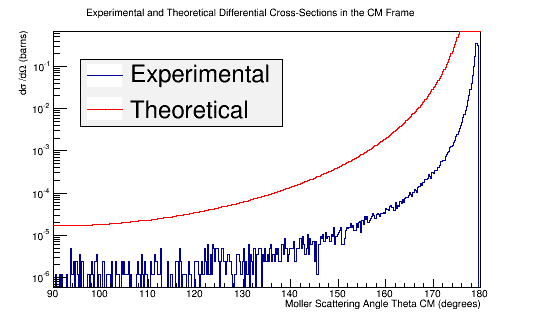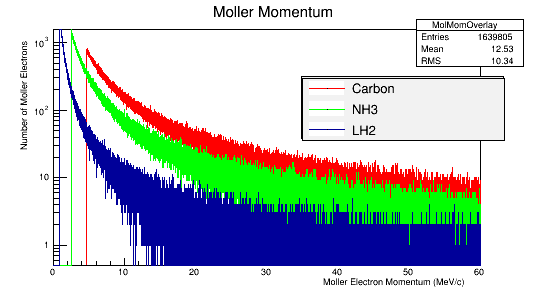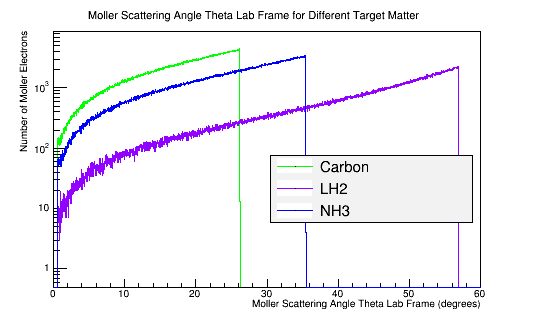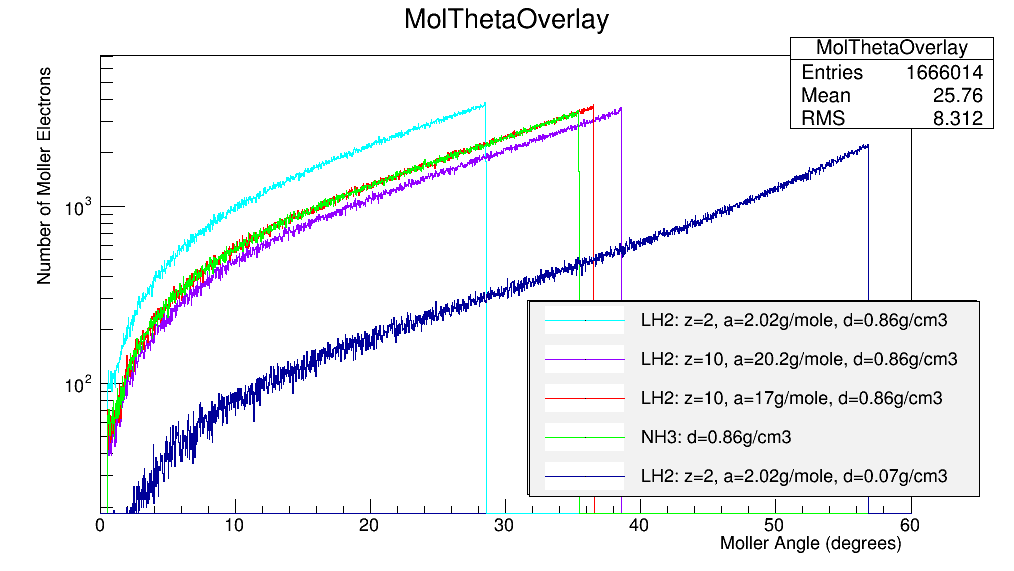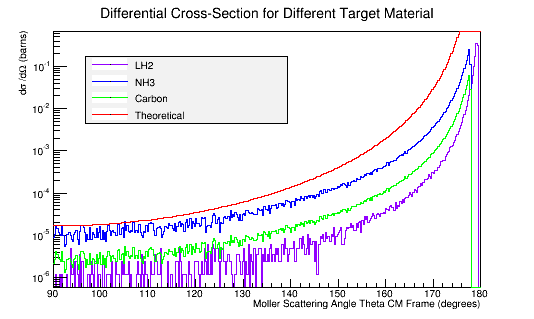DV RunGroupC Moller
need to insert moller shielding into card after moller LUND file is created. (see clas12/beamline)
Simulating the Moller scattering background for EG12
GEANT4 Simulation of Moller Events
Simulation Setup
Determine the Moller background using an LH2 target to check the physics in GEANT4
Distributions For LH2
LH2 Momentum Distribution in the Lab Frame
LH2 Angular Distribution in the Lab Frame
LH2 Momentum Distribution in the Center of Mass Frame
LH2 Angular Distribution in the Center of Mass Frame
Comparing experimental vs. theoretical for Møller differential cross section 11GeV
Change to a NH3 Target
Replacing the LH2 target with an NH3 target
Distributions for NH3
NH3 Momentum Distribution in the Lab Frame
NH3 Angular Distribution in the Lab Frame
NH3 Momentum Distribution in the Center of Mass Frame
NH3 Angular Distribution in the Center of Mass Frame
LH2 Vs. NH3
Comparing Momentum Distribution in the Lab Frame
Comparing Angular Distribution in the Lab Frame
Comparing Momentum Distribution in the Center of Mass Frame
Comparing Angular Distribution in the Center of Mass Frame
Figure out the offset
Rerunning the GEANT simulation for a target of solo atoms of Carbon 12
These graphs show an offset based upon the density of the target material.
Density of target material
C=2.26 g/cm3
NH3=.86g/cm3
LH2=.07g/cm3
The greater the density, the smaller the solid angle into which the Moller electron will scatter.
Density, atomic mass, and electron number effects
Temporarily changing the density of LH2 to be .86g/cm3, the density of NH3, and altering the atomic mass and electron number, we find
Differential Cross-Section Offset
Reconstruction
Moller Track Reconstruction in eg12
Papers used
[1]Farrukh Azfar's Derivation of Moller Scattering
A polarized target for the CLAS detector
An investigation of the spin structure of the proton in deep inelastic scattering of polarized muons on polarized protons
QED Radiative Corrections to Low-Energy Moller and Bhabha Scattering
http://arxiv.org/abs/1602.07609
